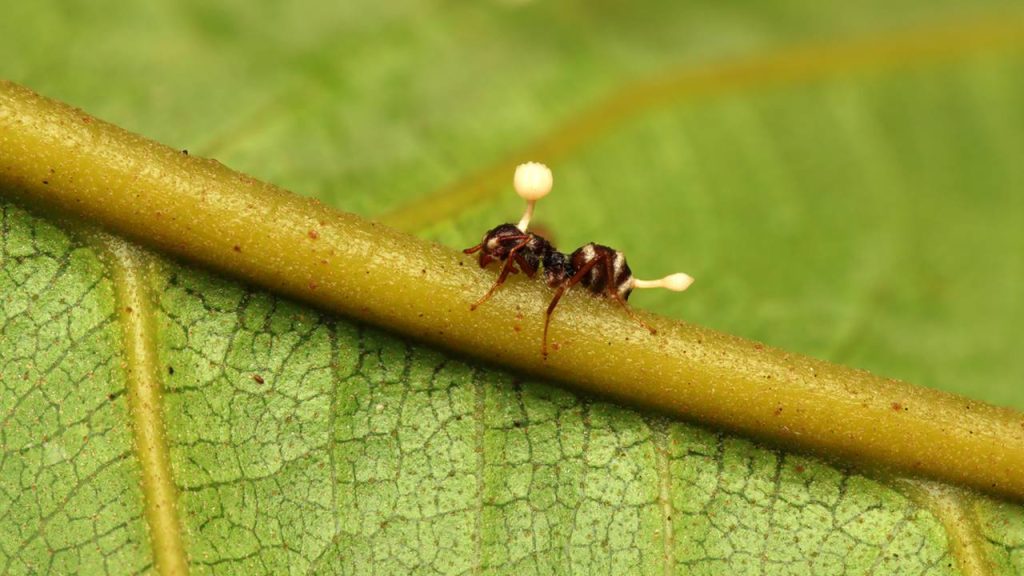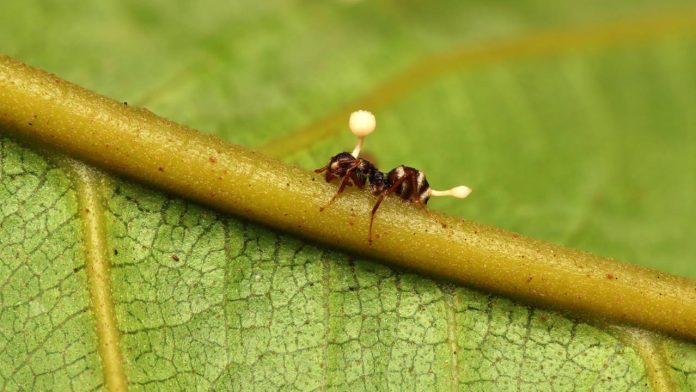There is a cordyceps that can zombify ants to reach its goal. But there are also other species of cordyceps with medicinal properties that can be found in herbalists.

- Cordyceps fungus: what it is and how it creates zombie ants
- Cordyceps fungus: what it is used for in medicine
In the series The Last of Us, which airs on the HBO platform, a contagious fungus penetrates people’s bodies and takes over their will, turning them into cannibalistic creatures.
The idea was already in the video game created by the company Naughty Dog for the PlayStation console in 2013, on which the HBO series is based. Writer and screenwriter Neil Druckman came up with the idea that the fungus was a strain of cordyceps, a genus that actually exists.
In fiction, cordyceps can infect humans and turn them into zombies. In reality, most cordyceps infect and parasitize insects and arthropods but not humans. Some are parasites of other fungi.
CORDYCEPS FUNGUS: WHAT IT IS AND HOW IT CREATES ZOMBIE ANTS
Most cordyceps strains do nothing but infect insects and arthropods, feeding on their tissues until they kill them. But one strain in particular, Cordyceps unilateralis (also called Ophiocordyceps unilateralis) was the one that inspired Druckman for its amazing life cycle: this fungus penetrates the ant Camponotus leonardi, which inhabits the treetops of the rainforest and somehow manages to control its nervous system.
First it causes convulsions, so that the ant falls from the tree to the ground. A few days later, at noon, he makes it climb to the highest part of a plant (up to about 25 cm in height, optimal for the objective of the fungus), where it bites with an abnormal force the ribbing of a leaf and dies. Then the fungus continues to develop, strengthens the exoskeleton of the ant to protect itself, until a few days later it comes out of the head to release its spores and reach as far as possible … The process takes 4 to 10 days and occurs in habitats in Thailand, Southeast Asian islands, Brazil, Japan, and the states of South Carolina and Florida in the United States.
How the fungus manages to control the behavior of the ant with absolute precision is a mystery, but it is believed that two substances secreted by cordyceps, sphingosine or guanidinobutyric acid, and hypoxanthine are involved.
Fortunately, it is not possible for Cordyceps unilateralis to infect a mammal, thanks to our body temperature, among other things. But in the first chapter of The Last of Us, a scientist explains that climate change can cause adaptive mutations in fungi. This is true, but at the moment, no real scientist is very concerned about that possibility.
CORDYCEPS FUNGUS: WHAT IT IS USED FOR IN MEDICINE
The truth is that there are other species of cordyceps much more benevolent. Not with insects, because they also parasitize them without controlling their behavior, but they have properties that have made them natural medicines, which can be found in any herbalist.
Traditional medicines in China and Tibet use Cordyceps sinensis (also called Ophiocordyceps sinensis or Sphaeria sinensis). This fungus is found in the mountainous regions of Tibet and Nepal. It parasitizes larvae of the moth Hepialus armoricanus Oberthuer, in whose bosom it produces the fruiting body, a dark brown stem of a few centimeters, which comes out of the earth in an upright position.
The body of the caterpillar fungus is collected by hand in the forests and is highly valued as medicine and as an aphrodisiac. Demand makes the product scarce, but there are lab-grown cordyceps (Cordyceps militaries), which are used to make commercial supplements.
Laboratory studies show that cordyceps is able to stimulate the number and activity of immune cells. It could also stimulate the production of progesterone and protect the kidneys from the toxic effects of cyclosporine (an immunosuppressive drug), among other properties.
In article 8 beneficial properties for the health of the cordyceps fungus we explain in more detail the indications and how this natural remedy is consumed.

